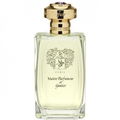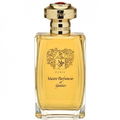06/07/2024

Intersport
80 Reviews
Translated
Show original

Intersport
Top Review
19
Cola / Cola light / Cola Zero
Of course, reformulations are not just limited to perfumes - anything based on formulas can also be reformulated. The wikipedia page for Coca-Cola Zero Sugar also mentions such reformulations: the drink, which was launched in 2005, has already been restructured twice, in 2017 and 2021.
santal Noble was also relaunched in 2017, here is an attempt to comment on at least one of the pre-2017 versions and the current version:
Santal Noble belongs to the group of fragrances that Jean François Laporte chose to launch at Maître Parfumeur et Gantier (MPG) in 1988. A good introduction to Laporte and MPG can be found in RiveGauche's 2013 commentary on Racine (1988), another MPG debut. Laporte's name often comes into play when it comes to the beginnings of perfumery, and rightly so, even if there are few direct sources on his person. The current MPG site also mentions his perspective on naming and titling.
"Breaking away from the codes and trends of his time, the artist [Laporte] reverted to an almost forgotten practice since the end of World War II: giving his fragrances the name of a note, immediately identifiable and symbolizing a very literal interpretation of the world, at a time when the trend leaned more towards abstract perfumes."
Interesting, a quasi anti-modern concept, considering the entry of modernity into perfumery with Jicky (1889) and its abstract name for a fragrance. This 'immediately identifiable' naming is still commonplace. Despite all the references to the centuries-old perfumer / glove maker, the almost antiquarian flacons - the first large of Laporte's works had it all: even if they were sometimes dedicated to a certain ingredient or style: the perfumes had a certain something. Unfortunately, as is often the case with smaller houses that don't have the big crowd-pleasing hits in their program or that just churn out stuff like clockwork, MPG went quiet, for a long time the brand fluctuated between being forgotten and an insider tip, perhaps also because of Laporte's persona and influence, until the brand was bought by a former business partner of Laporte's in 2013 and launched in a new make-over in 2017. A lot went wrong here, an interview with the owner Mr. Fahad published on Fragrantica speaks volumes, among other things it was the biggest 'challenge' to design the new bottles (in the practical quantity of 120ml!)...
Admittedly, the older bottles were borderline trash: while the first version with a diamond cut and 90ml size was just ok, the proportions of the bottle were rather unfortunate when switching to the red 100ml bottles, the bright red plastic gemstone was still on top, unfortunately the adhesive with which this jewel was fixed often came loose, etc. - but: the fragrances were still refined and very, very unique, despite the first reforming when they were moved into the 100 ml bottles in question. Here we go back to Santal Noble, in the older version the highlight was a note perceived by the brand as coffee, but by me rather as cola (possibly via labdanum), which meandered through the entire course and repeatedly removed the classic side of Santal Noble.
Was Laporte a caffeine lover? Eau des Îles (1988), his darkest fragrance and certainly one of the darkest of the 80s, was also adorned with an abstract coffee note. Black, unsweetened of course, which is somewhat more clearly discernible in Eau des Îles, was still a far cry from the countless realistic coffee gourmands with frappucino to ristretto flavors in those years, but it was precisely the suggestion and abstraction that made the note special here. The fact that Eau des Îles of all fragrances was discontinued is also telling, as the scent represents a consistent continuation of earlier 'dark' herbal fragrances such as Yatagan (1976) or Jules (1980).
Even though coffee is still mentioned in the 2017 Santal Noble, the cola-like interpretation of the previous version is gone. I feel the same way about other 2017 reissues, such as Route de Vétiver, Jardin du Nil, Iris Gris Bleu: the respective differences that made these fragrances so special seem to have been deliberately removed. It is like seeing the Sphinx with or without the tip of its nose. Generally recognizable, but that certain something is missing. Whether this kind of alignment with standardized tastes will serve MGP, I doubt.
What remains of Santal Noble is still a strong spice-sandalwood fragrance, illuminating a direction that was commented on in the following years by Etro (1989), Villoresi (1995), Lutens (1997), for example, and which is now virtually non-existent (in 'Western' perfumery). The spices are blended, clove and allspice lend a little edge, cinnamon-like as a wheat marker, tangerine peel? I can also imagine subtle coffee from time to time, but sometimes not. Sandalwood, here presumably a blend of natural fragrances in combination with sandalwood such as polysantol and firmsantol, as used at almost the same time in the first versions of Guerlain's Samsara (1989), remains darkly colored for a long time, the creamy aspects attributed to the delicate profile of Mysore sandalwood also come into their own in the course, the spices remain present throughout. New are natural oakmoss parts and Biebergeil-like, the latter being clearly recognizable - I am tempted to attribute this possibly to the 'neo-retro' wave, but the earlier version in the red 100ml bottle did very well without it. Be that as it may, these two heavyweights of 'loaded' ingredients make the new Santal Noble seem more classic, or rather more conservative, than the fragrance already was.
When was the tipping-point since 'European' sandalwood fragrances could only be coconut-creamy, (earthy)nutty-behaving, starch-heavy and soft? Lutens' Santal Blanc (2001) might have been an impetus here, although this, at least in its original version before the short-lived move to 100ml bottles and accompanying reformulation, had an excellent Mysore sandal base, complete with the sour, slightly Yogurth-like details.
Interesting sandalwood, at the moment apparently only given enough space in the artisan sector, special interest treasures such as UCCA's Batavia Oud (2023 version) demonstrate this only too well.
12 Comments




 Top Notes
Top Notes  Spices
Spices Frankincense
Frankincense Coffee
Coffee Heart Notes
Heart Notes  Mysore sandalwood
Mysore sandalwood Patchouli
Patchouli Vanilla
Vanilla Vetiver
Vetiver Base Notes
Base Notes  Ambergris
Ambergris Oakmoss
Oakmoss Castoreum
Castoreum
 Frankcrummit
Frankcrummit Omardo
Omardo























